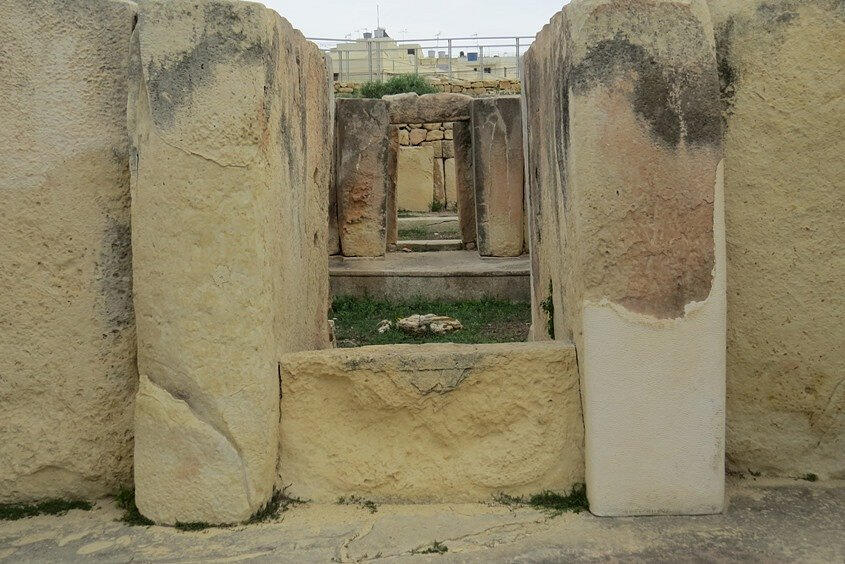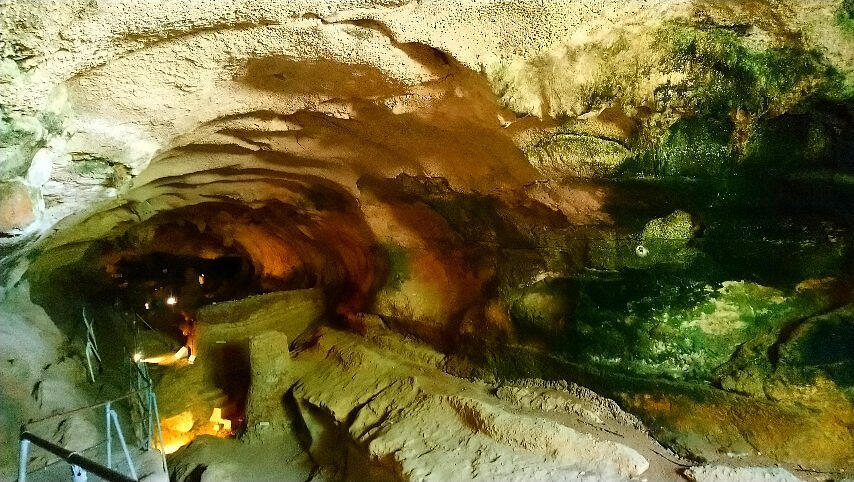Malta Prehistoric Temples & MdinaItinerary
Ħaġar Qim and Mnajdra
Ħaġar Qim, over 5000 years old.
Is found at the top of a promontory with a fertile plain to its east and garrigue sloping down to the sea to the west. 500m downhill from Ħaġar Qim one finds Mnajdra, a contemporary building, probably used by the same community given its proximity.

The main building of Ħaġar Qim is unusual with features and doorways along its external wall. The floor of the central passage inside the building is paved in stone slabs while the floors in the chambers branching off this passage are made from beaten earth. The original low-relief carvings, copies of which are nowadays in this building, are displayed at the National Museum of Archaeology in Valletta.

Mnajdra consists of three buildings, constructed in both globigerina and coralline limestone. The first and oldest structure is the small three-apsed structure. The South building, with its concave façade was next to be completed followed by the Central building which was constructed on an artificial platform between the two earlier buildings. The South building’s doorway is aligned with sunrise during the Spring and Autumn equinoxes.
Admission fee included

Ħal Tarxien Prehistoric Complex
Discovered in 1913 by farmer Lorenzo Despott, the site consists of a complex of four megalithic structures built in the late Neolithic.
Mdina is a fortified city in the Northern Region of Malta which served as the island's capital from antiquity to the medieval period. The city is still confined within its walls, and has a population of 250, but it is contiguous with the town of Rabat, which takes its name from the Arabic word for suburb, and has a population of over 11,000.

The Tarxien Temples consist of three separate, but attached, temple structures. The main entrance is a reconstruction dating from 1956, when the whole site was restored. At the same time, many of the decorated slabs discovered on site were relocated indoors for protection at the Museum of Archaeology in Valletta. The first temple has been dated to approximately 3100 BC and is the most elaborately decorated of the temples of Malta.

The middle temple dates to about 3000 BC, and is unique in that, unlike the rest of the Maltese temples, it has three pairs of apses instead of the usual two. The east temple is dated at around 3100 BC. The remains of another temple, smaller, and older, having been dated to 3250 BC, are visible further towards the east.
Admission fee included

Għar Dalam
"Cave of Dalam" is a 144-metre long phreatic tube and cave,[1] or cul-de-sac, located in the outskirts of Birżebbuġa, Malta.
The cave contains the bone remains of animals that were stranded and subsequently became extinct in Malta at the end of the Last Glacial Maximum. It has lent its name to the Għar Dalam phase in Maltese prehistory, and is viewed as one of Malta's most important national monuments.

The cave was included on the Antiquities List of 1925, but was not opened to the public until March 1933. A museum was set up on site by the then-Curator of Natural History, Joseph Baldacchino. Within a year of his appointment as curator in 1935, Baldacchino published a booklet on Għar Dalam, highlighting the main excavations and investigations of the cave.

Dwarf elephant, hippopotamus, giant swan, deer and bear bone deposits found there are of different ages; the hippopotamuses became extinct about 10,000 years ago, whilst the deer species became extinct much later, about 4,000 years ago during the Chalcolithic. It is also here that the earliest evidence of human settlement on Malta, some 7,400 years ago, was discovered.
Admission fee included


Mdina
A natural redoubt, the area of the city has been inhabited since prehistory. A Phoenician colony known as Ann was established around the 8th century BC, sharing its name with the island and presumably acting as its capital. During the Punic Wars, the town was acquired by the Romans and renamed Melita (Greek: Μελίτη, Melítē) after the Greek and Latin name for the island, probably taken from the Punic port at Cospicua on the Grand Harbour. Greco-Roman Melite was larger than present-day Mdina. It was reduced to its present size during the period of Byzantine or Arab rule.
At Oi Cabs Malta Tours
Our tour drivers are well-versed in the history, culture, and hidden gems of the region, ensuring that each journey is not only informative but also memorable. Whether you are looking to explore historical landmarks, indulge in local cuisine, or discover off-the-beaten-path attractions, our drivers are committed to making your travel experience truly exceptional.
Prices
Vechicle up to 2 person's
€230
Vechicle up to 8 person's
€370
The tour can be customized to your specific needs. We believe this tailored experience will exceed your expectations and provide a unique and personalized way to explore Malta.
